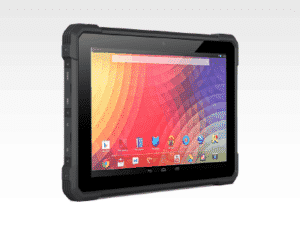For decades, choosing a processor for a computer system was a relatively simple matter. The software you expected to run on the system had indicated requirements, such as a minimum and recommended CPU clock speed and CPU type. Armed with that information, computer buyers could choose a CPU that met their current needs, with some room for a few years of growth, and fit with the rest of their system. To some extent, that process continues today – though as each year goes by, it changes a bit more.
Though traditional computer systems can still have their processors upgraded, motherboards replaced, and even the entire base-station swapped out, modern tablet computers are often difficult or impossible to upgrade once assembled. The components can’t be easily accessed, and the processors, elaborate System on a Chip (SoC) designs are usually not interchangable with other boards. Because upgrading a tablet generally means replacing the entire tablet, it’s important to understand the processor market and what various designs offer before making a selection.
ARM and Other Processor Architectures
Today, virtually all Android-powered devices run on ARM (Advanced RISC Machine) based processors, though some versions of Android now support x86 and MIPS 32-bit and 64-bit architectures, as well. Reduced Instruction Set Computing processors are the dominant style found in Android Tablets and other Android mobile devices, because they are typically smaller, lighter, more energy efficient, and designed to multi-task on frequently used but less demanding apps.
ARM-based processors today generally take the form of a “System on a Chip” (SoC), where the main processor cores, graphics processor cores, and modules like WiFi, Ethernet, and USB connectivity. Some SoCs also contain memory, basically making them a complete computer in one chip. A number of manufacturers license the ARM company intellectual property to manufacture their own processors and SoCs – and Androd Tablet manufacturers in turn select SoCs from these manufacturers that support the hardware and software their tablet users need.
Quad-Cores and other Numbers

Because systems have changed dramatically from requiring enough clock-speed horsepower, it’s important to understand how tasks are now handled when choosing a processor. Processors with multiple processing “cores” are now common. Dual-Core, Quad-Core, and even Octa-Core (8) processors are now common. The way these numbers are tossed around, one may be tempted to believe that additional cores are like additional GHz of clock-speed. The more, the better. In actuality, the number of cores simply represents how subdivided a given processor is – a processor with more cores has more ability to handle individual tasks simiultaneously, but it is not any “faster” than a processor with fewer cores but the same clock speed. Additional cores in a processor designed to handle only a few tasks may not be an improvement.
What About Estone Technology Android Tablets
Estone Technology has arranged partnerships with two prominent ARM processor manufacturers that allow us to create some of the mot reliable, efficient, diverse android tablets on the market. Our tablets feature both NXP and Rockchip processors, depending on need, both of which are among the biggest names in the game for android powered equipment.
Whatever your goals, you can count on Estone Technology to do a full evaluation and design a tablet with the power, speed, and efficiency to meet your needs. Contact us today for a consultation, or even resquest a full OEM proposal based on your designs.
